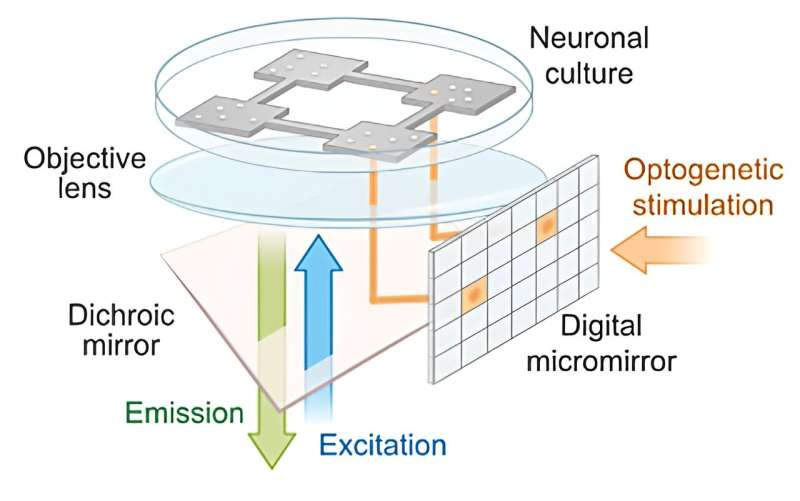
Scientists have found that the outer cortex of the mammalian brain is able to maintain control over all the external inputs it receives because of how its nerve networks are organized into interconnected but independently functioning “modules.”
The finding was the result of a unique experimental system that grew neurons, the functional elements of the brain, on microfabricated glass surfaces. Computational models then described the experimental observations.
The work, by an international team of researchers led by Hideaki Yamamoto from Tohoku University and Jordi Soriano from the University of Barcelona, was published in the journal Science Advances.
The cortex is the outer layer of the brain that contains a large number of neurons responsible for functions such as sensory perception, motor control, and higher-order computation.
“Neuronal networks, like those in the mammalian cortex, need to be able to segregate inputs from specialized circuits, and to integrate inputs from multiple circuits,” says Yamamoto. But it has not been clear how the cortex is able to support these two very different processing paradigms.
To study this, the researchers guided cortical neurons to form a network containing multiple sub-groups, or modules. The lab-grown neurons were engineered to express light-sensitive proteins so they could be stimulated using a specific wavelength of light.
The team found that the more well-formed modular networks had large responses to localized light stimulation, while those with less “modularity” responded to all stimulus in an excessively synchronized way.
For this effect to happen, the applied light stimulation was delivered to different parts of the network at different times, to mimic the real-life inputs to the cortex from subcortical parts of the brain. However, when the overall excitability of the entire network was raised simultaneously, by increasing potassium concentration across the entire network, this did trigger a synchronous, coordinated activity response across the entirety of the networks.
“This balance between locally segregated activity and globally integrated activity is thought to be important for the brain to be able to expand its capacity for information representation with limited resources,” explains Yamamoto.
The discovery not only helps scientists understand the interplay between structure and function of the mammalian brain but can also help improve the development of artificial neural networks for use in machine learning research.
More information:
Hideaki Yamamoto et al, Modular architecture facilitates noise-driven control of synchrony in neuronal networks, Science Advances (2023). DOI: 10.1126/sciadv.ade1755
Journal information:
Science Advances
Source: Read Full Article


